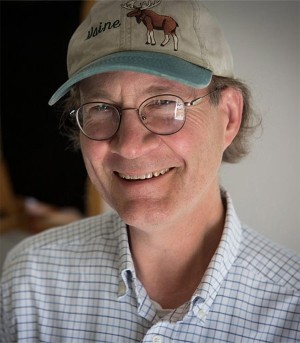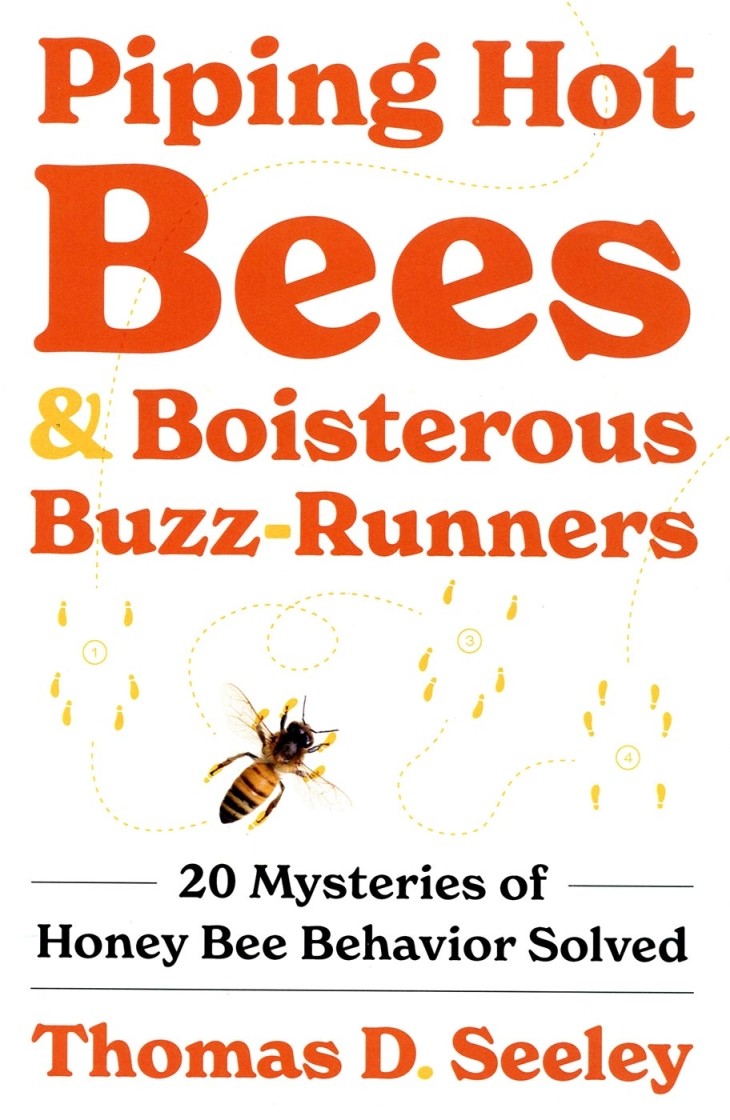Thomas Seeley is a professor of biology in Cornell University’s Department of Neurology and Behavior and the author of Piping Hot Bees & Boisterous Buzz-Runners: 20 Mysteries of Honey Bee Behavior Solved, to be published this month by Princeton University Press. Seeley has spent half a century studying the behavior and social life of bees. His earlier works include Honeybee Ecology (1985), The Wisdom of the Hive (1995), and Honeybee Democracy (2010). He lives in Ithaca, New York.
Why do you write?
My main reason for writing is to share what I have discovered about the behavior, social life, and natural history of honey bees. These are the creatures that I have investigated for more than 50 years. I have written more than 200 journal articles for fellow scientists. While writing these formal reports, I often felt that I should share what I had learned about honey bees with non-scientists, especially beekeepers. So, in the 1980s, I began to write books for general readers, describing the nifty things I and other biologists have learned about the lives of honey bees.
What inspired Piping Hot Bees and Boisterous Buzz Runners?
I wanted to provide a personal account of my studies of the behaviors of honey bees. It’s a book of personal stories, arranged in chronological order, each of which describes in plain language how my colleagues and I solved a particular mystery about honey bee behavior.
You study collective intelligence in honey bees. Does your research inform your thinking on human behavior and potential?
Yes, it does. In studying how hundreds of nest-site scouts in a honey bee swarm work together to choose their homesite, I learned what I call the “five habits of highly effective groups.” These habits helped me structure deliberations in faculty meetings when I served as head of the Department of Neurobiology and Behavior at Cornell. There are intriguing similarities between honey bee swarms and the organizational structure of New England town meetings. This is the subject of Chapter 10, Swarm Smarts, in my 2010 book, Honeybee Democracy.
How many times have you been stung?
Fifty-five years of beekeeping times (approximately) 20 stings per year equals 1,100 stings. Fortunately, I (like most beekeepers) have lost my sensitivity to bee venom.
What advice do you have for new writers?
Identify a topic that you find fascinating and spend plenty of time learning about it. Find a way to take notes that works well for you. Ideally, write for an organization that has high writing standards and that provides good editorial feedback. When I was a young professor I wrote an article for the magazine American Scientist. The editor went over my manuscript in detail and walked me through the changes she advised. This was a powerful and invaluable learning experience for me, so I have tried to replicate it with my students.
Do you have another book in you?
I think so. My wife and I are working on a history of the 100-acre forest we own and inhabit on a hillside outside of Ithaca. It is one the first hill farms to be abandoned (in 1880) in Tompkins County. We are pulling together a social and ecological history of this forest, based on what we see – stone piles, areas with a smooth forest floor (indicative of plowed fields), the foundations of the house and barn – and on the human and agricultural census records of the 1800s, our tree-ring studies, and studies of the local cemetery. We have a conservation easement with the Finger Lakes Land Trust to permanently protect the land from development and poor forest management.
How would you describe your connection to the northern forest?
It is long standing. I grew up in valley called Ellis Hollow, which lies few miles east of Ithaca, between two steep-sided hills, Mount Pleasant and Snyder Hill. As a boy, I spent much time exploring this valley’s forested hillsides and the old fields and wetlands in its bottom. Dark groves of hemlock trees line the deep ravines of the streams that flow down the hills to the wetlands. Many of the old fields are filled with 100-year-old oaks, hickories, birches, and other hardwoods.
What is your favorite forest activity?
On some days, it is cutting firewood (we heat our home with a woodstove), but on most days it is quietly walking through the woods, just watching and wondering.
What's the best little-known nature book you have read?
Donald C. Peattie’s A Natural History of Trees.
In your opinion what is the most fascinating bee species?
Without a doubt, it is Apis mellifera, the familiar honey bee. Their complex colony organization, powers of communication, diverse work skills, and collective intelligence achieved through debates make the species more fascinating to me than any other bee species.
What was your biggest whoops moment in working with bees?
The moment I realized we make the lives of honey bees in cold climates very difficult because our conventional hives (made of 3/4”-thick lumber) provide only about 10 percent of the insulation a colony enjoys when it lives in a tree cavity, where the walls are 6 or more inches thick. It’s hard for colonies to keep warm in these conventional hives.
Who inspires you?
My greatest source of inspiration is the German scientist, Professor Martin Lindauer. He set the stage for many of my investigations of honey bees. He modeled a method of finding and solving mysteries about honey bee behavior based on careful observations and low-tech, but incisive, experiments.
What’s your spirit animal?
Hmmm. I do not know about spirit animals. But I just took an online quiz. It says I am a hawk and so am all-knowing. This is funny, because one thing I do know is that I am not all-knowing.




Discussion *